Bladderwrack
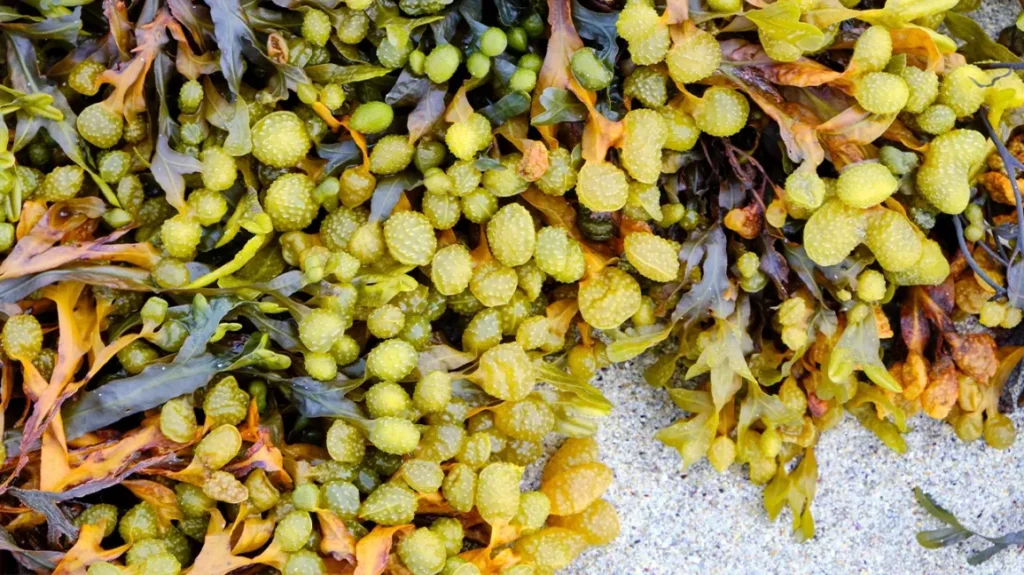
Bladderwrack is a type of seaweed that has been used in traditional medicine for centuries. It is commonly found in the North Sea, the western Baltic Sea, and the Atlantic and Pacific Oceans. Bladderwrack is rich in minerals, particularly iodine, and is often associated with supporting thyroid health.
Size:
- Bladderwrack typically grows up to 35 inches (90 cm) in length.
- The fronds are broad and flat, with air bladders that help keep the plant buoyant in water.
Color:
- The seaweed is typically olive-brown in color, with a glossy appearance when wet.
- The air bladders are often a lighter shade of brown.
Texture:
- Bladderwrack has a leathery, smooth texture, with a slightly slippery feel due to its mucilaginous content.
Fragrance:
- Bladderwrack has a characteristic seaweed scent, which is salty and slightly earthy.
Uses:
- Thyroid Support: Bladderwrack is rich in iodine, which is essential for proper thyroid function. It is often used in herbal remedies to treat underactive thyroid (hypothyroidism).
- Weight Management: The herb is also used in weight loss supplements due to its potential to boost metabolism.
- Anti-Inflammatory: Bladderwrack contains compounds that may help reduce inflammation and support joint health.
- Digestive Health: It is used to soothe the digestive tract and is believed to help with indigestion and other gastrointestinal issues.
Habitat:
- Bladderwrack grows attached to rocks or other hard surfaces in intertidal zones, where it is exposed to both air and water during different times of the day.
- It is most commonly found in cold, temperate coastal waters.
Cultural Significance:
- Bladderwrack has been used in various traditional medicine systems, particularly in Europe, for its health benefits.
- In coastal communities, it has also been used as a fertilizer and animal feed.
Spiritual Properties
- Protection: In some traditions, Bladderwrack is used in protective rituals and is believed to shield against negativity and harm.
- Purification: The herb is also used in purification rituals, especially those involving water, to cleanse the body and spirit.
Medicinal Properties
- Thyroid Health: Due to its high iodine content, Bladderwrack is commonly used to support thyroid function, particularly in cases of hypothyroidism.
- Anti-Inflammatory: The herb has anti-inflammatory properties that can help reduce inflammation in joints and tissues.
- Weight Loss: Bladderwrack is often included in weight loss supplements due to its potential to increase metabolism and support fat burning.
- Digestive Aid: It is used to soothe the digestive tract and relieve issues like indigestion, constipation, and bloating.
Adverse Actions & Side Effects
- Excess Iodine: Overconsumption of Bladderwrack can lead to excessive iodine intake, which may cause thyroid dysfunction or exacerbate existing thyroid conditions.
- Heavy Metal Contamination: As a seaweed, Bladderwrack can accumulate heavy metals from polluted waters, which can be harmful if ingested in large quantities.
Side Effects:
- Digestive Upset: Some individuals may experience nausea or upset stomach when consuming Bladder.
Allergic Reactions: In rare cases, Bladderwrack may cause allergic reactions, including itching, rash, or difficulty breathing, particularly in individuals allergic to iodine or seaweed.
Thyroid Imbalance: Due to its high iodine content, excessive consumption of Bladderwrack may lead to thyroid imbalances, such as hyperthyroidism, especially in those with pre-existing thyroid conditions.
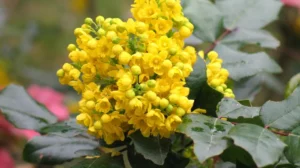
Oregon Grape Root
Oregon Grape Root Oregon Grape Root (Mahonia aquifolium) is a perennial evergreen shrub native to the Pacific Northwest region of North America. It is known

Holy Basil (Tulsi) Protection Tea
Holy Basil (Tulsi) Protection Tea A sacred tea known for its spiritual protection and ability to promote inner strength, clarity, and resilience. Ingredients: Holy Basil

Indian Gooseberry (Amla)
Indian Gooseberry (Amla) Amla, or Indian Gooseberry, is a small, greenish-yellow fruit known for its sour and tangy taste. The fruit is round, smooth, and
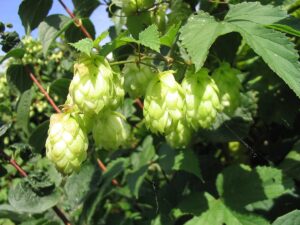
Hops Flowers
Hops Flowers Hops flowers are known for their distinctive appearance, fragrance, and various applications, particularly in brewing and herbal medicine. The cone-shaped flowers, harvested from
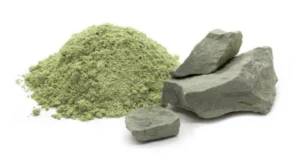
French Green Clay
French Green Clay The overall appearance of hibiscus flowers is bold and exotic, making them a popular choice for gardens, decorations, and floral arrangements. Their
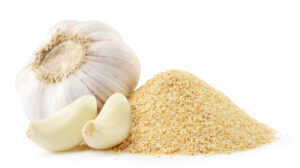
Garlic Granules
Garlic Granules Garlic Granules are a dried and ground form of garlic, offering a convenient way to incorporate the potent flavor and health benefits of